March 17
Kate Greenaway
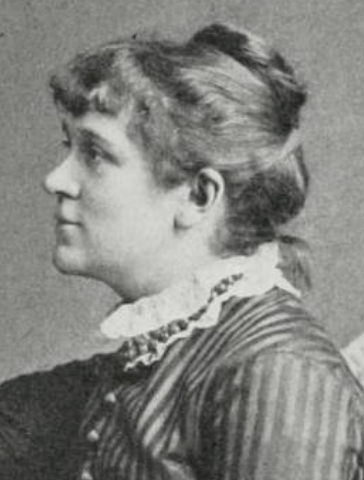
On this date in 1846, Kate Greenaway was born in London. Her father was an engraver for Punch and her mother was a seamstress. She attended a school of art as a teen, then the newly opened Slade School, where, as a female student, she was barred from life drawing classes involving nude models. She exhibited her first illustration in 1868.
Her delicate watercolors of children wearing simple, timeless frocks, landscapes and flowers are classics that are still instantly recognizable today. Greenaway’s oft-reprinted books include Illustrated Mother Goose (1881), the picture book Under the Window (1877), the Birthday Book and The Language of Flowers (1884). Her watercolors were exhibited at the Royal Academy from 1877 onward. She corresponded for 20 years with art critic John Ruskin and was not shy about expressing skepticism about religious claims.
Greenaway died of breast cancer at age 55. The British Library Association inaugurated a Kate Greenaway Medal in 1955 to be given to the best illustrator of children’s books. (D. 1901)
“Did you ever believe at all in religion, I mean did you ever believe it as the Bible gives it? I never did — it's so queer.”
— Greenaway letter to Violet Dickinson, July 10, 1896; "Kate Greenaway" by M.H. Spielmann and G.S. Layard (1905)
Moncure Daniel Conway
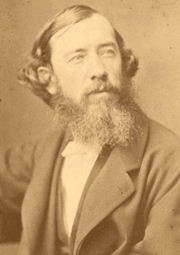
On this date in 1832, Moncure Daniel Conway was born into a conservative, pro-slavery family in Virginia. Becoming a Methodist minister at an early age, Conway soon gravitated toward Unitarianism. He graduated from Harvard Divinity School in 1854 as a Unitarian minister. Conway was much influenced by his “spiritual father,” Ralph Waldo Emerson, and abolitionist Theodore Parker.
By 1862, Conway, whose liberality had alienated his congregations, had dropped Unitarianism. He helped about 30 of his father’s slaves escape to freedom at the start of the Civil War. After embarking on an abolitionist speaking tour abroad, he was offered a position in 1863 at South Place Chapel in London, an independent and increasingly freethinking congregation. Under Conway’s tutelage, the chapel became an open-minded hub of new ideas, showcasing the day’s newsmakers and intelligentsia.
Conway, who had become an agnostic, is known for his Life of Paine (1892), the first major positive biography about the revolutionary. Conway researched and wrote other biographies, including one on Hawthorne. He also edited a four-volume edition of Paine‘s works and wrote several other books, such as Demonology and Devil Lore (1879). Conway, who had returned to America when his wife was dying, became an expatriate in Paris following his disgust with the U.S. war against Spain. (Theodore Roosevelt had even invited arch-critic Conway to join the Spanish.)
Conway completed his autobiography in 1904. When the South Place Ethical Society built its new facilities in Red Lion Square, London, in 1929, it named the building “Conway Hall.” Regular meetings are still held at Conway Hall every Sunday. Its library is adorned with portraits of freethinkers, including many of Conway. (D. 1907)
"Sunday was a day of just so much external restraint as public opinion absolutely demanded. I learned at last, as I came to be about seventeen, that my father was an entire freethinker, as much as I am now. It shocked me much, because he never taught me anything, allowed me to pick up religion from any one around me, and then scolded me because I embraced beliefs which he knew must condemn him."
— "Autobiography: Memories and Experiences of Moncure Daniel Conway" (1904)
Madame Roland
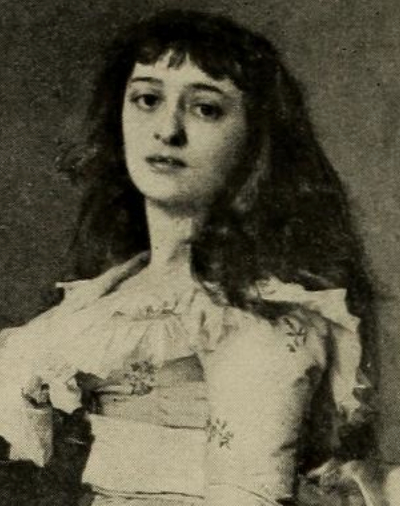
On this date in 1754, revolutionary Marie-Jeanne Roland de la Platière, known as Madame Roland, was born in Paris. Her father was a fairly prosperous engraver. She was the only child after six siblings died in infancy. She taught herself to read at age 5 and as a child was very religious. Only a few years later she started to question Catholic doctrine. Reading the controversial works of theologian Jacques-Bénigne Bossuet led her to apply the test of reason to her faith when she was a teen, wrote her biographer Ida M. Tarbell: “Each system she examined, fascinated her. In turn she was Jansenist, stoic, deist, materialist, idealist.”
She married Jean-Marie Roland de la Platière in 1780. Their home was eventually a hub of the Girondists of the revolution and she became the famed Madame Roland. She wrote political articles for such journals as Courrier de Lyon. When the Rolands spoke out against the excesses of the revolution, Robespierre had her imprisoned. During her five-month detention, she penned her Memoirs and tried to assist prisoners at the jail for prostitutes where she had been placed.
Roland was sentenced to die the same day she was found guilty in 1793 of betraying the revolution. Glimpsing a statue embodying “liberty” on the way to the scaffold, she famously said: “O Liberte, que de crimes on commet en ton nom!” (“O Liberty, what crimes are committed in thy name.”) When her husband heard a few days later in his hiding place in Rouen that she had been executed, he committed suicide.
“Soon after she began to study the Christian dogma rationally, she revolted against the doctrines of infallibility and of the universal damnation of all those who never knew or who had not accepted the faith.”
— "Madame Roland: A Biographical Study" by Ida M. Tarbell (1896)
Alexander McQueen
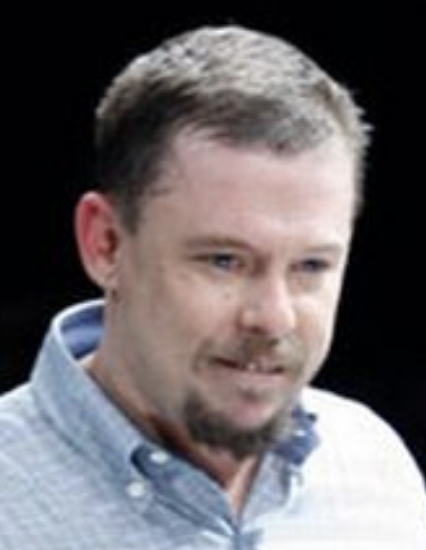
On this date in 1969, fashion designer Lee Alexander McQueen was born in London’s East End, the son of a taxi driver. He dropped out of school at 16 to apprentice himself to Savile Row tailors, worked for Romeo Gigli and Koji Tatsuno, then completed his master’s at Central St. Martins College of Art and Design in 1991.
McQueen soon introduced his own label and was named chief designer at Givenchy in 1996. McQueen won several “Best British Designer” awards. Among his famous clients were David Bowie and Kate Winslet, for whom he designed her “Titanic” dress.
In 2000 he had a marriage ceremony with his partner George Forsyth, a documentary filmmaker. At age 40 in 2010, McQueen committed suicide in his London home. He had suffered from anxiety and depression for some time. (D. 2010)
"I’m an atheist and an anti-royalist, so why would I put anyone on a pedestal?"
— McQueen, 1996 interview, "Bowie on Bowie: Interviews and Encounters with David Bowie," ed. Sean Egan (2015)
Patrick Duffy
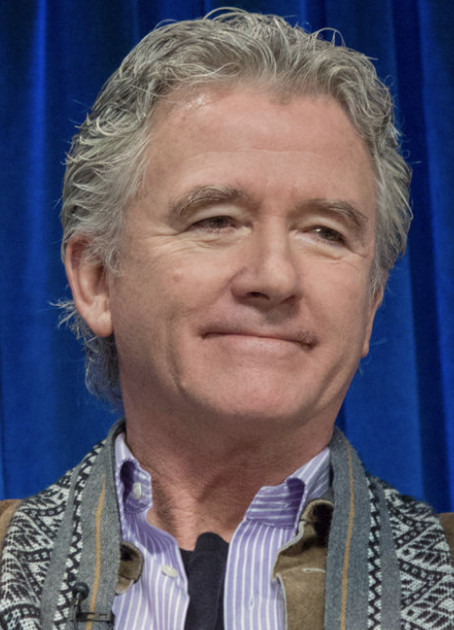
On this date in 1949, actor Patrick Duffy was born in Townsend, Montana. He graduated from the University of Washington, attending the Professional Actors Training Program. Athletically inclined, he taught mime for a time while seeking acting jobs. He married Carlyn Rosser, a professional ballerina 10 years his senior, in a Buddhist ceremony in 1974. They were married until her death in 2017 and had two sons. His parents were tragically murdered in 1986 during an armed robbery of their tavern in Montana.
Duffy is known for his role as Bobby Ewing (the nice son) in the hit TV series “Dallas” (1978-1985, 1986-1991). He starred with Suzanne Somers in the family sitcom “Step by Step” (1991-98) and then in two “Dallas” reunion television movies. In 2006 he started a recurring role on the daytime soap opera “The Bold and the Beautiful” as Stephen Logan. He reprised his role as Bobby Ewing in TNT’s remake of “Dallas” from 2012-14.
PHOTO: Duffy at the PaleyFest forum on “Dallas” in 2013; photo by iDominick under CC 2.0.
"[Buddhism] deals with the fact, in essence, you know, come right out and say it, that there is no God, that the individual is God."
— Duffy on Bill Maher's "Politically Incorrect" (July 19, 1999)
Robert Blatchford
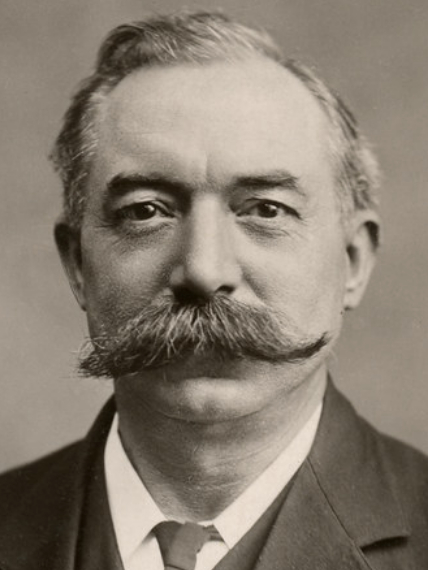
On this date in 1851, Robert Peel Glanville Blatchford was born in Maidstone, England. He was raised by his actress mother after his father’s death. At age 20 he joined the army, which he served in for six years, attaining the rank of sergeant. He was deeply influenced by his military service and would write several books drawn from this experience, most famously My Life in the Army (1910).
After leaving the service, Blatchford married Sarah Crossley. In 1883, he began writing for newspapers around Manchester, where they settled. In 1885 he moved to London to become a full-time journalist, using the pen name “Nunquam Dormio” (Latin for “I never sleep”), which he would continue to use throughout his life, sometimes shortening it to merely “Nunquam.” Blatchford became attracted to socialist ideas while reporting on conditions in Ireland and the slums of Manchester.
In 1891 he co-founded the socialist newspaper The Clarion, for many years the primary popularizer of English socialism. His first popular book, Merrie England, an influential explication of socialist principles, was published in 1893. In that same year, Blatchford was involved in the foundation of the Independent Labour Party, a forerunner of the modern Labour Party, despite his distrust of electoral and party politics. His autobiography, My Eighty Years, was published in 1931.
In 1903 he wrote God and My Neighbor, a critique of religion, especially Christianity. God and My Neighbor sparked major debate and brought condemnations from the pulpit for two years after publication. Later in life, Blatchford abandoned his earlier materialist views after the death of his wife in 1921; unable to believe that she was really gone, he turned to spiritualism, while continuing to reject Christianity and other revealed religions. (D. 1943)
“I cannot believe that any religion has been revealed to Man by God. Because a revealed religion would be perfect, but no known religion is perfect; and because history and science show us that known religions have not been revealed but have been evolved from other traditions.”
— Blatchford, "God and My Neighbor" (1903)
Andrew Hozier-Byrne

On this date in 1990, singer-songwriter Andrew Hozier-Byrne, known professionally as Hozier, was born in Bray, County Wicklow, Ireland. The son of a blues musician, Hozier grew up around music, joining a band when he was 15. Hozier began a degree in music at Trinity College in Dublin but dropped out to record for Universal Music. In 2009 he toured internationally with the Irish choral group Anúna.
Hozier’s first solo EP, “Take Me to Church,” was released in 2013. The music video for the title track, which addresses gay discrimination in Russia, went viral: “Take me to church / I’ll worship like a dog at the shrine of your lies / I’ll tell you my sins and you can sharpen your knife.” Hozier spoke of the song in an interview with Buzzworthy: “It’s about humanity at its most natural, and I guess the song is very much about sexuality, about the sexual act itself. It’s also a little bit of a tongue-in-cheek swipe at, say, the Church and organizations that would undermine humanity at its most natural by pontificating over things like sexual orientation or natural humanity.” (March 14, 2014.)
Though raised a Quaker by Catholic apostates, Hozier rejects the notion of faith. Instead, he finds absolution in creating the soul, R&B and blues music of his childhood. Hozier’s second EP, “From Eden,” appeared in 2014. In 2018 he released an EP titled “Nina Cried Power,” featuring the title track as a single. He released his second album, “Wasteland, Baby!,” in March 2019. It debuted atop the U.S. Billboard 200.
"I still wouldn't define myself as an atheist — it's too absolute. But I don't have any faith. I think faith is an absurd thing but I'm OK with that. There are no answers because the universe never asked a question in the first place."
— Hozier-Byrne, interview with The Evening Standard (June 6, 2014)
